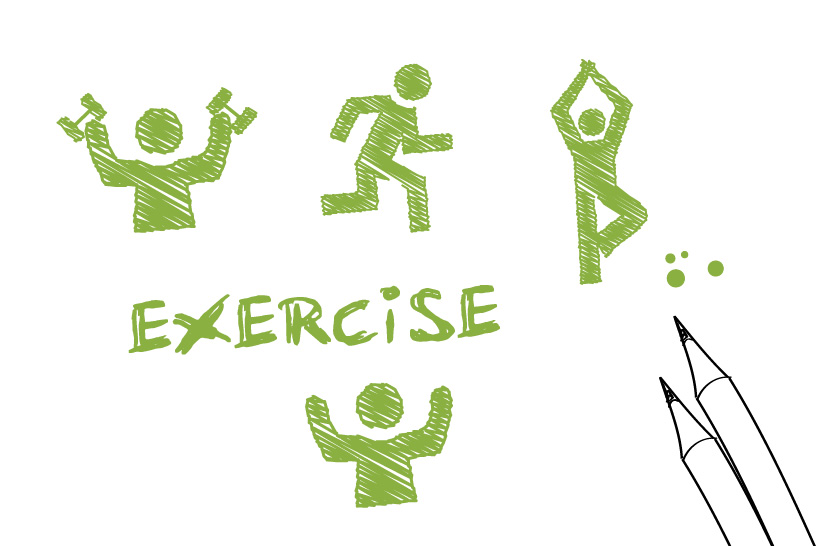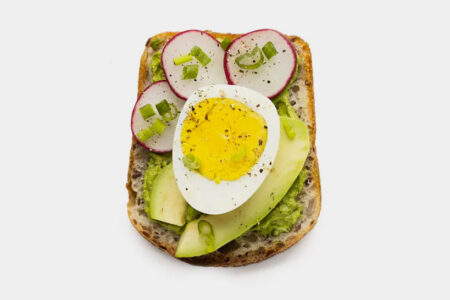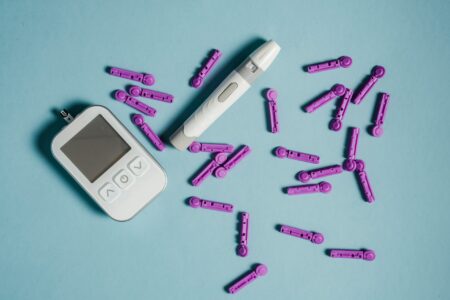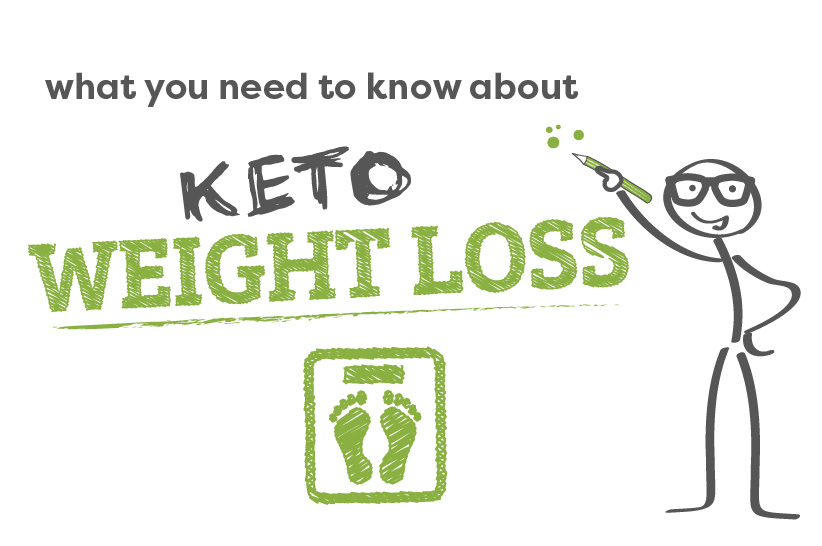Going on a low-carb high-fat diet leads to a depletion in glycogen stores and eventually, weight loss. Here’s what you need to know about keto weight loss.
Many people, especially women, use ketogenic diet for its weight loss benefit. Consuming 20 grams to 50 grams of total carbs daily and boosting your dietary fat leads to a drop in glycogen (your storage form of glucose) levels 1. This triggers the natural metabolic state called ketosis and the fat-burning process.
But the idea of weight loss can be oversimplified. There’s more that you should know if you want to lose weight successfully and maintain it. Read on to find out more.
Note: This article is written for general informational purposes only and not to provide medical advice.
How Much Weight Can You Lose on a Very Low Carbohydrate Ketogenic Diet?
Many studies show that the keto diet induces weight loss and leads to a lower body mass index 1, 2.
Losing 50 pounds can take more time than losing 10 pounds, which usually happens within 2 weeks 1. The reason is that your metabolism changes over time and some factors also play a role. These include your calorie intake, activity level, and the quality of your food.
However, if we consider a gradual and steady weight loss rate of 1 to 2 pounds a week, losing 50 pounds on a low-carb diet will take you up to 25 weeks 3. That’s about 6 months.
How Long Does It Take to Lose Weight on Keto?
You’ll be able to lose 50 pounds of body weight within 6 months. This is a healthy weight loss rate. To give you more context, here’s what you can expect in terms of weight loss during the early stages of adhering to the diet.
First week of keto
It is expected that in the first week of keto, you’re likely to lose up to 10 pounds. Ketogenic diets really suppress appetite and have a diuretic effect 1. You may also experience keto flu which is your body’s way of adapting to the diet.
Peeing more than usual is one of the signs that a low-carb high-fat diet is working since your body burns through its glycogen stores. 1 gram of glycogen is stored with 3 grams of water in your muscles. That is why when glycogen is broken down, it gets excreted together with water via your urine 4.
This significant loss of water is known as water weight loss. Fat loss happens later on as your body runs on ketones, its alternative fuel.
First month of keto
By this time, you’ll start to feel the impact of the keto diet on your body. Water weight loss stops, followed by fat loss. You may be losing inches from your waist but the number on the scale isn’t dropping.
It’s important to keep in mind that a typical weighing scale doesn’t paint an accurate picture of fat loss. You may be gaining muscle at the same time, which is a good thing, especially if you’re lifting weights. We recommend measuring your body fat percentage instead.
Another thing that you should be aware of when you use ketogenic diet for fitness is the keto plateau. A weight loss plateau happens when you no longer see progress with your fat loss. This can be caused by your body’s adaptation to the diet or other factors like hidden carbs and stress.
After 3 months of keto
As long as you keep up your efforts, you should be able to lose as much as 25 pounds of weight within 3 months and attain long-term weight loss. Of course, this may vary per individual. Check your physical activity, stress levels, and other habits.
How Can I Beat a Weight Loss Plateau and Speed Up My Progress?
If you’re losing weight at a gradual and steady rate, which is 1 to 2 pounds a week, you should not worry about speeding up weight loss.
But if you’re hitting a plateau, you might need to address individual circumstances.
Check for hidden carbs in your low-carb diet. Avoid them. Adjust your macros accordingly. You might be eating more total or net carbs than you need to stay in ketosis! But if you’re already staying within the lower end of your daily carb allowance, you might need to check your protein portions 5.
Here are more tips to maximize weight loss and break keto stalls:
1. Examine your snacking habits.
Do you find yourself snacking more often throughout the day? While eating snacks is a good way to stave off hunger in between meals, snacking isn’t necessary on a daily basis.
A study done on patients with Type 2 Diabetes showed that eating two larger meals a day is more effective for losing body weight compared to eating six smaller meals 6.
2. Track your calorie intake.
If you’re trying to lose weight, your calorie intake will still matter.
Just because you’re following a low-carb high-fat diet, doesn’t mean you won’t pay attention to calories. To create a calorie deficit and lose weight, you need to reduce the number of calories in every keto diet meal or increase your physical activity. Make sure that you don’t eat more calories than you burn.
Don’t know how many calories you need per day? A keto macro calculator should help you figure this out.
3. Recalculate your macros.
You may not know about this, but yes, it’s essential to check your macros every now and then. A good time to recalculate macros is when you’re no longer losing weight at 1 to 2 pounds per week.
Remember that as a person loses weight on a high-fat low-carb diet, their metabolism slows down. Larger bodies require more energy to perform activities 7. So it makes sense to re-run your keto macro calculator.
4. Ramp up your physical activity.

Exercise definitely plays a role in promoting weight loss even on a low-carbohydrate diet. It also helps with maintenance after a person loses weight 8. On top of its fat-burning effect, exercise combined with diet reduces disease in high-risk people 9.
With that having said, try to incorporate more physical activity into your day. Move more whether at home or work. Schedule a workout at least three days a week.
Tip: Set an alarm to remind yourself to stand up and move.
5. Get adequate, quality sleep at night.
Being sleep deprived increases your cortisol levels which promote fat storage and muscle loss 10. Cortisol is our primary stress hormone, and being overly exposed to cortisol can lead to other problems like anxiety, depression, heart disease, and memory and concentration problems 11.
7 Keto Weight Loss Mistakes
Watch out for these common mistakes that could slow down your progress on a keto diet. The good news is that it’s never too late to make changes. Read the mistakes below.
1. You’re not in ketosis.
A big reason for low-carbohydrate diet weight loss stalls is getting kicked out of ketosis. Not staying within your macro ratio can prevent glycogen depletion and ketone production. To reach and maintain ketosis, your macro ratio should be:
- 55% to 60% of calories from fat
- 30% to 35% of calories from protein
- 5% to 10% of calories from carbohydrates
The best way to tell whether you’re in ketosis is to test your ketone levels using a blood ketone meter. Your blood ketones should be at 0.5 to 3 mmol/l.
2. Eating too much protein and carbs.
You already know that too many carbs will increase blood sugar, stop ketosis, and cause weight gain. If you want to maximize your body’s fat-burning potential, track your total carbs and not your net carbs. Also, stay at the lower end of your carb allowance for the day.
What about protein? Why is too much of it bad for ketosis? Protein intake should be kept at a moderate amount. That means 30% to 35% of your daily calories. This should be enough to maintain lean body mass and function.
Going overboard with protein leads to glucose production from non-carb sources via gluconeogenesis.
3. Not getting enough exercise.
When you exercise, your liver breaks down its glycogen stores to release glucose and keep your muscles working. So yes, exercise can put you in ketosis faster.
Evidence shows that being sedentary for long periods increases the amount of fat deposited around your internal organs. Moreover, it raises your risk of getting Type 2 Diabetes 12.
4. Drinking too much alcohol.
Too much alcohol will not only kick you out of ketosis, but it also promotes weight gain in the following ways:
- Alcohol can easily push you over your calorie limit for the day. (Pure alcohol has 7 calories per gram).
- Study shows that it puts your brain in a starvation mode. When you drink alcohol, you are more likely to go hungry and make unhealthy food choices 13.
- Alcohol intake is associated with a bigger waistline. This is prominent in older individuals who drink alcohol more often and have beer bellies.
Since alcohol is a hot topic, we’ve put together this guide on the best and worst alcoholic drinks when you’re on a very low-carbohydrate ketogenic diet.
5. Stress.
Chronic stress on a keto diet may significantly affect your ability to lose weight. It can slow your metabolism and increase deep in the abdomen via increased cortisol levels. Also, stress affects your food choices that lead to weight changes.
In a randomized controlled trial, it was shown that an 8-week stress management program reduced BMI, perceived stress, level of depression, physical activity, and dietary habits in patients 14.
6. Constant snacking.
Snacking is part of our culture. And while snacking has benefits for many people, doing it more often causes weight gain.
Overdoing snacking even on healthy foods is wrong because it adds extra calories that you may not be able to burn. Rewarding yourself with keto snacks, even those with low net carbs, may also cause you to develop an unhealthy relationship with food.
Instead, focus on eating a nutrient-dense keto diet meal. Choose filling, unprocessed meals that will help you stay satiated for hours. You can’t eat cured and sugar-glazed bacon every day and expect to not get hungry.
7. Underlying medical condition.
Even when following a very low-carbohydrate ketogenic diet in the best possible way, a small percentage of people don’t lose weight. This can be due to an underlying health condition.
The NHS lists medical reasons such as hypothyroidism, Cushing’s syndrome, and polycystic ovary syndrome (PCOS). Medications like insulin and steroids have side effects like increased hunger which leads to weight gain 15.
Summary
The keto diet is a popular tool for losing weight, and many studies show that it’s highly effective. While weight loss varies with each individual, a steady and healthy rate to aim for would be 1 to 2 pounds per week.
We’ve cited several reasons for weight loss stalls such as a lack of physical activity, stress, and constant snacking. You can overcome them and hopefully attain long-term weight loss using the strategies above.
Last but not least, go see a doctor if you suspect an underlying health issue.










![Juicing for Weight Loss: Everything You Need to Know [Plus Recipes]](/wp-content/uploads/2019/08/Juicing-for-Weight-featured-image.jpg)








